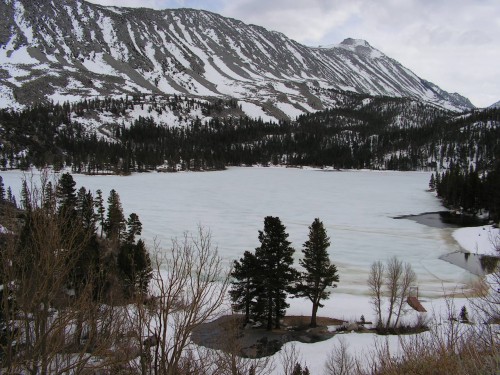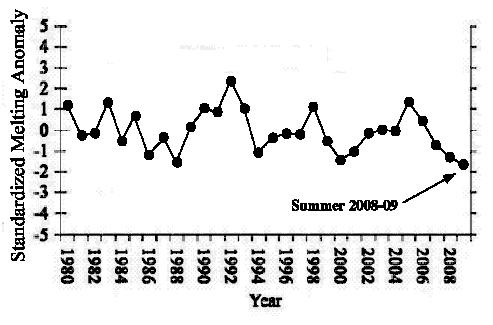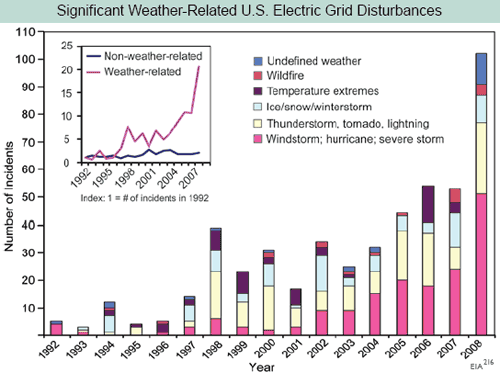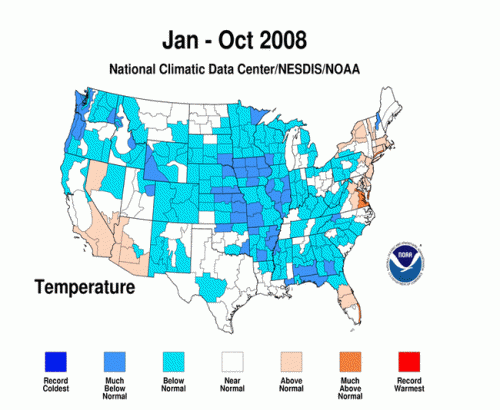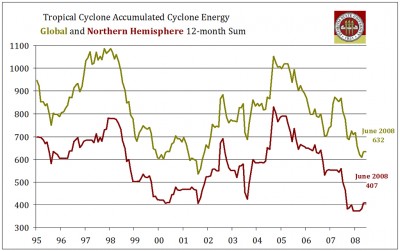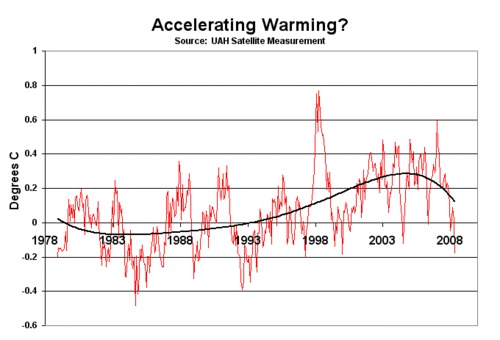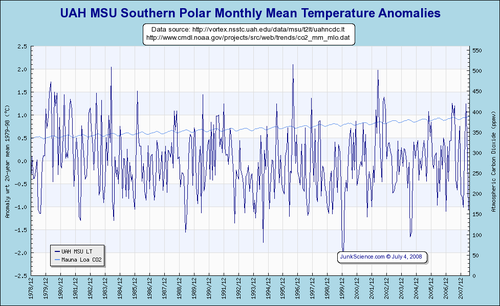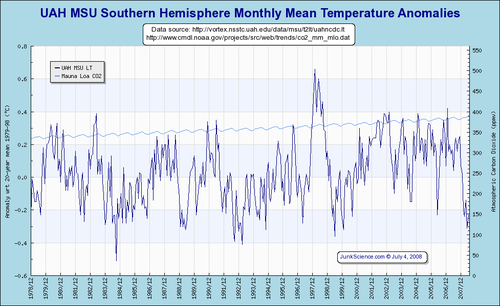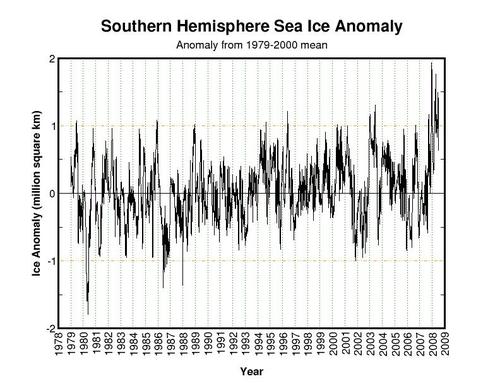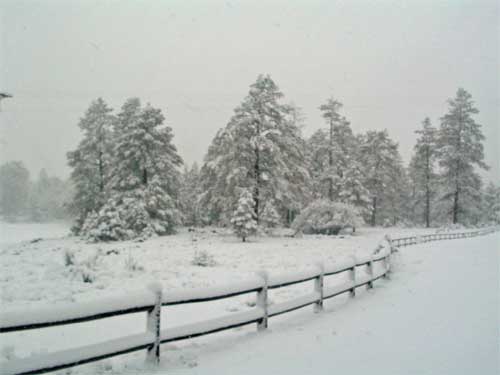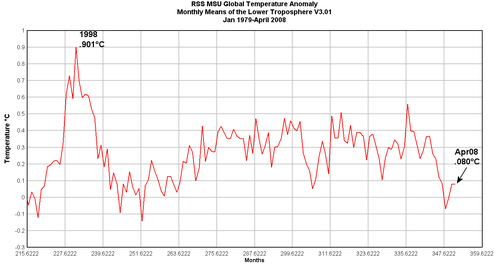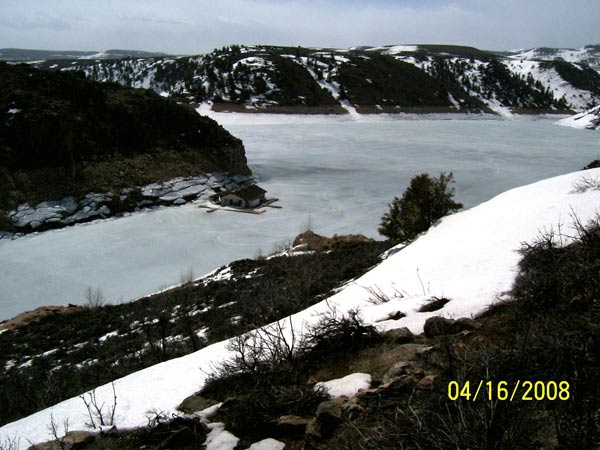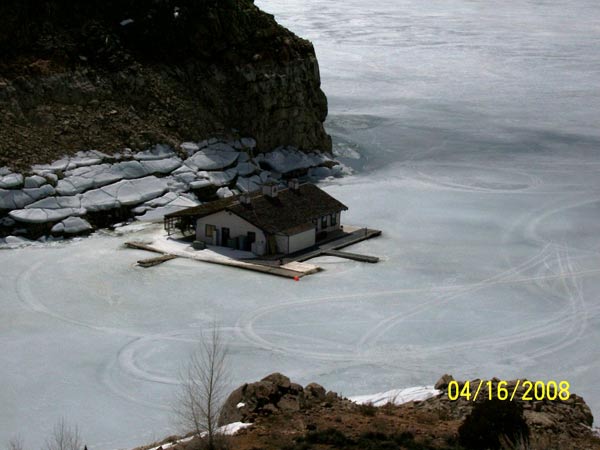Chris Mooney reports today that there’s also a very simple reason: global warming has raised sea levels by about eight inches over the past century, and this means that when Sandy swept ashore it had eight extra inches of water to throw at us.….So that’s that. No shilly shallying. No caveats. “There is 100 percent certainty that sea level rise made this worse,” says sea level expert Ben Strauss. “Period.”
Hmm, OK. First, to be clear, sea level rise over the last 100 years has been 17-20cm, which is 6.7-7.7 inches, which the author alarmingly rounded up to 8 inches. But the real problem is the incredible bait and switch here. They are talking about the dangers of anthropogenic global warming, but include the sea level rise from all warming effects, most of which occured long before we were burning fossil fuels at anywhere near current rates. For example, almost half this rise was before 1950, where few argue that warming and sea level rise was due to man. In fact, sea level rise is really a story of a constant 2-3mm a year rise since about 1850 as the world warms from the little ice age. There has been no modern acceleration.
It is pretty heroic to blame all of a trend on an input that really only appeared significantly about 2/3 into the period on this chart. By this chart, the warming since 1950, the period the IPCC blames warming mostly on man’s CO2, the sea level rise is only 10cm, or about 4 inches. And to even claim four inches form CO2 since 1950 one would have to make the astonishing claim that whatever natural effect was driving sea levels higher since the mid-19th century suddenly halted at the exact same moment man began burning fossil fuels in earnest. I’m not sure that the Sandy storm surge could even be measured to a precision of four inches or less.
Assuming three of the four inches are due to anthropogenic CO2, then the storm surge was 1.8% higher due to global warming (taking 14 feet as the storm surge maximum, a number on which there is little agreement, confirming my hypothesis above that we are arguing in the noise). Mooney’s argument is that damage goes up exponentially with surge height. Granting this is true, this means that Sandy was perhaps 3.5% worse due to man-made higher sea levels.
So there you have your stark choice — you can shut down the global economy and throw billions of people in India and China back into horrendous poverty, or your 100-year storms will be 3,5% worse. You make the call.
I would argue that one could find a far bigger contribution to Sandy’s nastiness in New York’s almost pathological refusal to accept in advance of Sandy that their city might be targeted by an Atlantic storm. Huge percentages of the affected areas of the city are actually fill areas, and there is absolutely no evidence of sea walls or any sort of storm preparation. I would have thought it impossible to find a seacoast city worse prepared for a storm than was New Orleans, but New York seems to have surpassed it.
As I wrote before, it is crazy to use Sandy as “proof” of a severe storm trend when in fact we are in the midst of a relative hurricane drought. There is no evidence that the seas in Sandy’s storm track have seen any warming over the last century.


